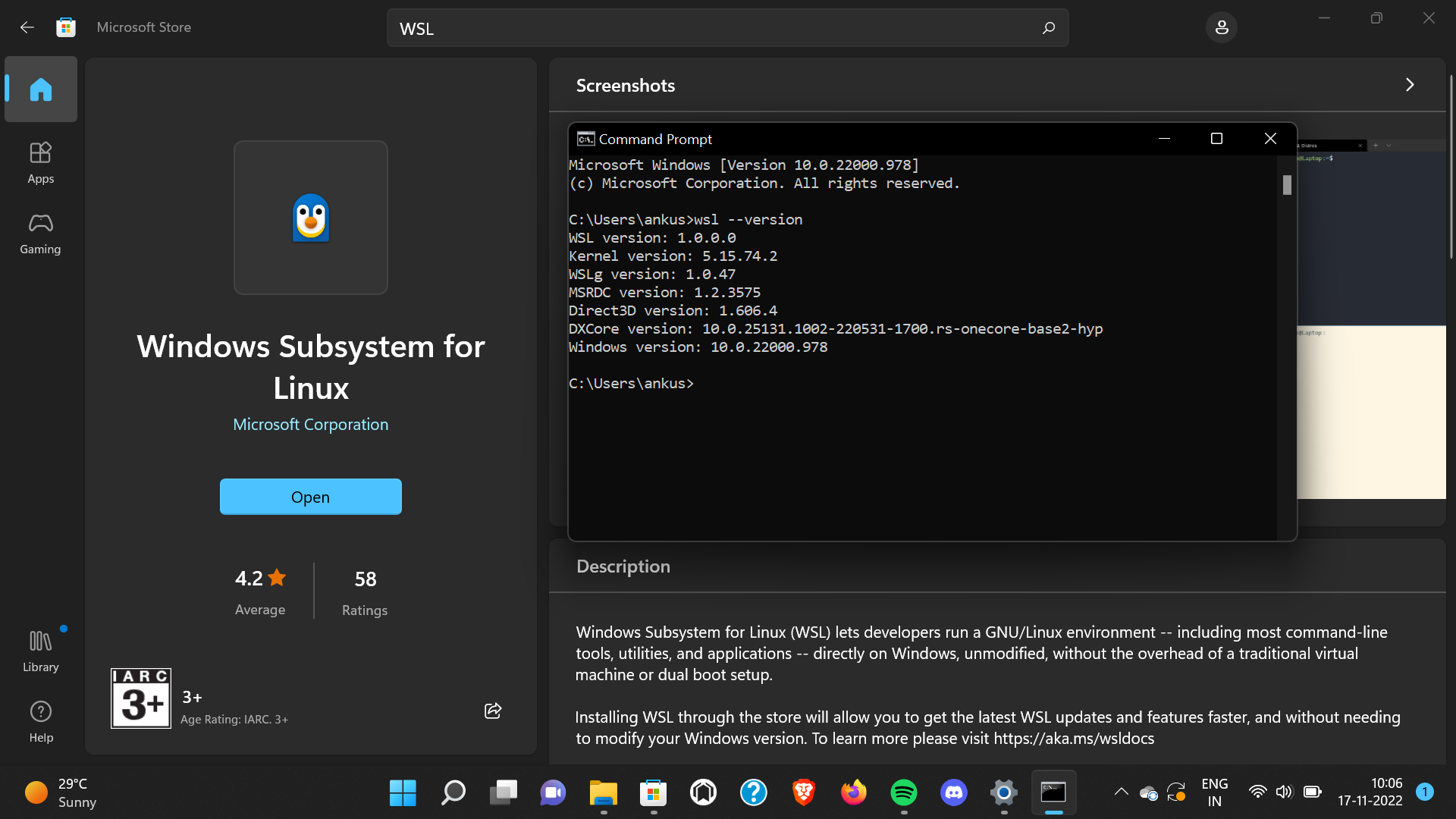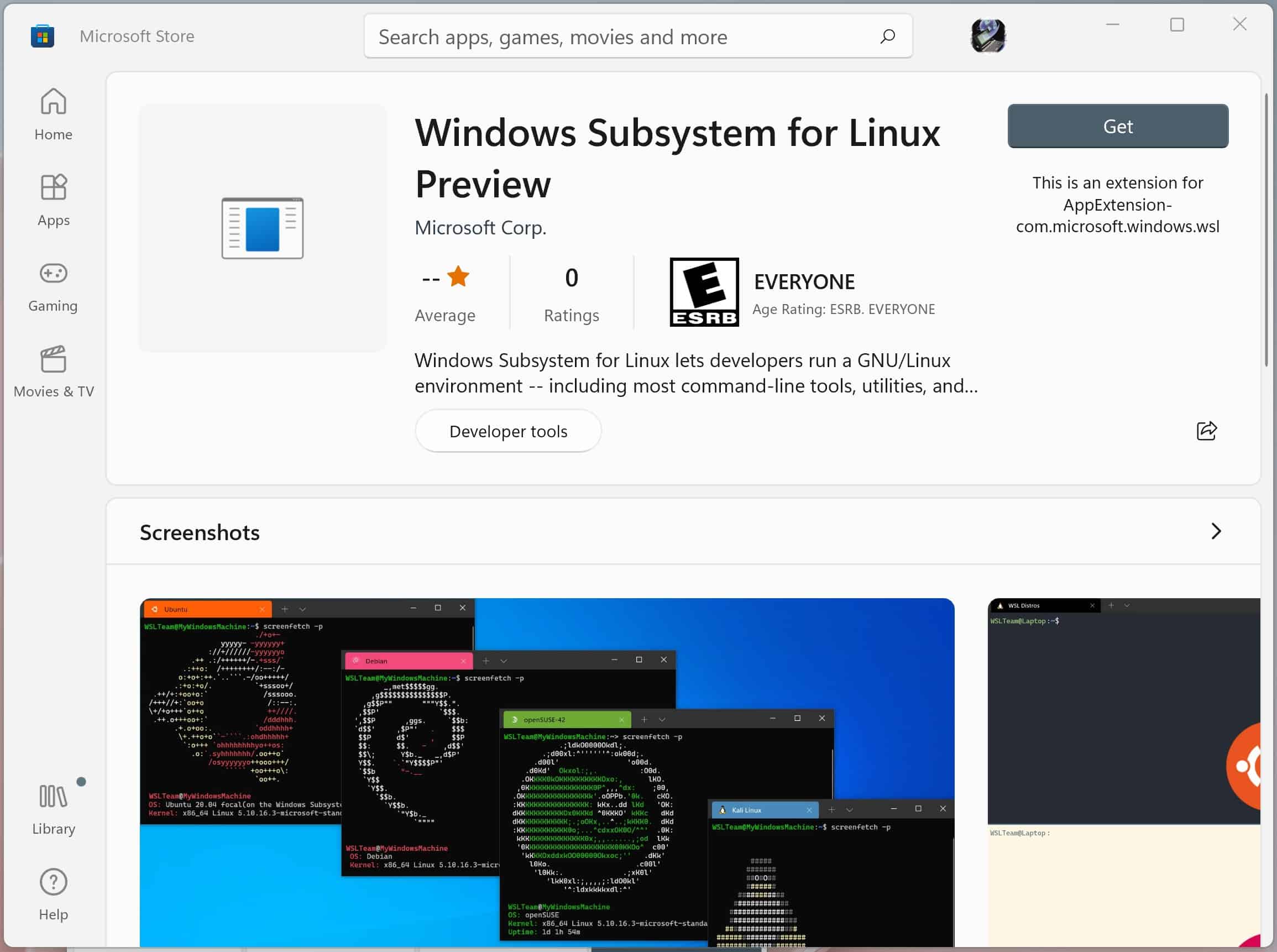WSL: The Ultimate Guide To Unlocking Windows Subsystem For Linux
Hey there tech enthusiasts and coding wizards! If you're diving into the world of development or just trying to level up your computer skills, you've probably stumbled upon something called WSL. That's right, WSL – Windows Subsystem for Linux – and it's a game-changer. Whether you're a seasoned developer or a curious beginner, this article will break down everything you need to know about WSL in a way that's easy to digest and packed with value. So grab your favorite drink, sit back, and let's dive in!
Now, I know what you're thinking – why should you care about WSL? Well, my friend, if you're someone who uses Windows but loves the flexibility and power of Linux, WSL is your golden ticket. It lets you run Linux distributions right on your Windows machine without needing to dual-boot or set up a full virtual machine. That's a big deal, trust me.
Before we get too deep into the nitty-gritty, let's establish one thing: WSL isn't just for tech nerds. It's for anyone who wants to streamline their workflow, explore new tools, or even just tinker around with some cool Linux commands. By the end of this guide, you'll not only understand what WSL is but also how to use it like a pro. So, are you ready to unlock the full potential of your Windows machine? Let's go!
- Rainbow Six Siege Liquipedia Your Ultimate Guide To Mastering The Game
- Unveiling The Magic The Cast Of Toy Story You Love
Table of Contents
- What is WSL?
- The History of WSL
- Why Should You Use WSL?
- How to Install WSL
- WSL Versions Explained
- Popular Linux Distributions for WSL
- Top Tips for WSL Users
- Common Issues and How to Fix Them
- Performance Optimization for WSL
- The Future of WSL
What is WSL?
Alright, let's start with the basics. WSL stands for Windows Subsystem for Linux, and it's essentially a compatibility layer that allows you to run Linux applications on Windows. No, I'm not kidding. You can fire up a Linux terminal, run commands, and even compile code – all from your trusty Windows setup. It's like having the best of both worlds without the hassle.
Here's the kicker: WSL doesn't just emulate Linux. It provides a real Linux kernel interface that runs on Windows, meaning you get native performance for most Linux tasks. Whether you're a developer, sysadmin, or just someone who loves experimenting with code, WSL is your new best friend.
And hey, don't worry if you're new to all this. We'll break it down step by step so you can understand exactly what WSL is and how it works. Think of it as your personal gateway to the Linux universe, right from your Windows desktop.
- Jude Dillon A Rising Star In The Entertainment World
- Unlocking The Potential Of Estore Broward County Your Ultimate Guide
Why is WSL Important?
Let's face it: Windows is still the go-to operating system for many people, especially in the business world. But Linux has its own charm, especially when it comes to development tools, scripting, and server management. WSL bridges that gap by letting you use Linux tools without leaving the comfort of your Windows environment. It's like having a superpower, but for your computer.
The History of WSL
WSL didn't just pop out of nowhere. Microsoft has been working on integrating Linux into Windows for years, and WSL is the result of that effort. Back in 2016, Microsoft announced WSL at the Build conference, and it was a game-changer for the developer community. It started as a basic compatibility layer but has since evolved into a powerful tool.
Over the years, WSL has gone through several iterations, with each version bringing new features and improvements. From WSL 1 to WSL 2, the system has become more robust, faster, and more versatile. And guess what? Microsoft isn't stopping there. They're constantly adding new features and optimizations to make WSL even better.
Key Milestones in WSL Development
- 2016: WSL is first introduced at Microsoft Build.
- 2018: WSL 2 is announced, bringing improved performance and better compatibility.
- 2022: Microsoft adds GUI application support to WSL, making it even more versatile.
Why Should You Use WSL?
Now that we know what WSL is and where it came from, let's talk about why you should care. Here's the deal: WSL makes life easier for developers, sysadmins, and anyone who needs to run Linux commands or applications on a Windows machine. No more juggling between dual-boot setups or virtual machines. With WSL, everything is right at your fingertips.
But wait, there's more! WSL also offers:
- Access to Linux tools: Need to use a Linux-specific command or tool? WSL has got you covered.
- Better performance: WSL 2, in particular, offers near-native performance for Linux applications.
- Seamless integration: You can easily access your Windows files from within WSL and vice versa.
And if you're a developer, WSL is a dream come true. It lets you set up development environments, run scripts, and test applications without leaving Windows. Plus, it's free – no extra licenses or subscriptions needed. What's not to love?
How to Install WSL
Ready to get started? Installing WSL is easier than you might think. Here's a quick step-by-step guide:
- Open PowerShell as an administrator.
- Type
wsl --installand hit Enter. - Restart your computer when prompted.
- Once your system restarts, open the Microsoft Store and choose your favorite Linux distribution.
That's it! You now have WSL installed and ready to go. If you want to dive deeper into customization or troubleshooting, we'll cover that later in the article. For now, just enjoy the fact that you're about to unlock a whole new world of possibilities.
Tips for First-Time Installers
If this is your first time installing WSL, here are a few tips to keep in mind:
- Make sure your Windows version supports WSL. You'll need Windows 10 or later.
- Choose a Linux distribution that fits your needs. Ubuntu is a great starting point for beginners.
- Don't forget to update your system regularly to get the latest features and fixes.
WSL Versions Explained
Alright, let's talk about the different versions of WSL. Currently, there are two main versions: WSL 1 and WSL 2. Here's what you need to know:
WSL 1
WSL 1 is the original version and works by translating Linux system calls into Windows system calls. It's lightweight and great for basic tasks, but it has some limitations when it comes to performance and compatibility.
WSL 2
WSL 2, on the other hand, runs a real Linux kernel and offers much better performance and compatibility. It's the recommended version for most users, especially if you're doing heavy development or running complex applications.
So, which version should you use? If you're just starting out, go with WSL 2. It's faster, more powerful, and offers better support for modern Linux applications. Plus, you can always switch back to WSL 1 if needed.
Popular Linux Distributions for WSL
One of the coolest things about WSL is that you can choose from a wide range of Linux distributions. Here are some of the most popular ones:
- Ubuntu: A user-friendly distribution that's perfect for beginners and advanced users alike.
- Debian: A stable and reliable choice for those who prefer a minimalist setup.
- Fedora: Known for its cutting-edge features and strong community support.
- Kali Linux: Ideal for security professionals and ethical hackers.
No matter which distribution you choose, you'll have access to a wide range of Linux tools and applications. Just pick the one that best fits your needs and start exploring.
Top Tips for WSL Users
Now that you're up and running with WSL, here are a few tips to help you get the most out of it:
- Customize your terminal: Use tools like Oh My Zsh or Powerline to make your terminal more visually appealing and functional.
- Learn the basics of Linux: Even if you're a Windows veteran, taking some time to learn Linux commands will pay off in the long run.
- Use WSL for development: Whether you're coding in Python, JavaScript, or any other language, WSL can streamline your workflow.
And remember, practice makes perfect. The more you use WSL, the more comfortable you'll become with it. Before you know it, you'll be navigating Linux like a pro.
Common Issues and How to Fix Them
No matter how great a tool is, you're bound to run into issues from time to time. Here are some common WSL problems and how to fix them:
- WSL won't start: Make sure you've enabled the WSL feature in Windows Settings and restart your computer.
- Performance issues: Try updating to WSL 2 for better performance. Also, ensure your system is up to date.
- File access problems: Use the
/mnt/cpath to access your Windows files from WSL.
If you're still stuck, don't hesitate to reach out to the WSL community or check out the official Microsoft documentation. Chances are, someone else has already solved the problem you're facing.
Performance Optimization for WSL
Want to squeeze every last bit of performance out of WSL? Here are a few tips to help you optimize your setup:
- Upgrade to WSL 2: As mentioned earlier, WSL 2 offers better performance for most tasks.
- Use a lightweight distribution: If you're short on resources, consider using a smaller distribution like Alpine Linux.
- Keep your system updated: Regular updates ensure you have the latest features and bug fixes.
And don't forget to experiment with different settings and configurations. WSL is highly customizable, so feel free to tweak it until it works just the way you want it to.
The Future of WSL
So, where is WSL headed? Well, Microsoft has big plans for the future. They're constantly adding new features, improving performance, and expanding compatibility. Some upcoming features to look out for include:
- Improved GUI application support.
- Enhanced integration with Windows tools and services.
- New distributions and updates to existing ones.
And who knows? Maybe one day WSL will become so powerful that it blurs the line between Windows and Linux altogether. Until then, keep exploring, experimenting, and pushing the limits of what you can do with WSL.
Conclusion
Alright, that's a wrap! By now, you should have a solid understanding of what WSL is, how it works, and why it's such a valuable tool. Whether you're a developer, sysadmin, or just someone who loves tinkering with code, WSL offers something for everyone.
So, what's next? Start experimenting with WSL, try out different distributions, and see how it can improve your workflow. And remember, the more you use it, the more you'll discover its full potential.
Before you go, don



Detail Author:
- Name : Brooks Moen
- Username : norwood.borer
- Email : dallas.roob@grady.org
- Birthdate : 1998-04-23
- Address : 39804 Quigley Garden Ratkeshire, AR 44405-9346
- Phone : +1-567-899-6257
- Company : Wyman Group
- Job : Supervisor Correctional Officer
- Bio : Rem ut aperiam quia iste soluta alias. Et aut quos est est voluptate deleniti. Unde delectus quis cupiditate impedit aut odit.
Socials
linkedin:
- url : https://linkedin.com/in/evelyn5189
- username : evelyn5189
- bio : Sequi rem eligendi temporibus sed a.
- followers : 4069
- following : 1663
twitter:
- url : https://twitter.com/wildermane
- username : wildermane
- bio : Quis odit eius accusamus. Dolorum architecto cum minima rem.
- followers : 799
- following : 983